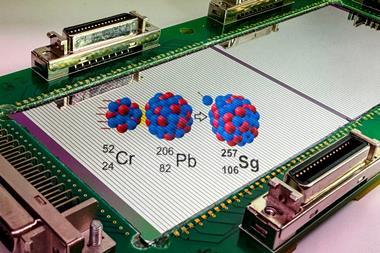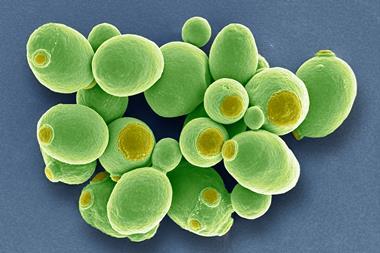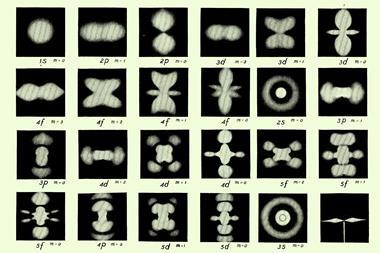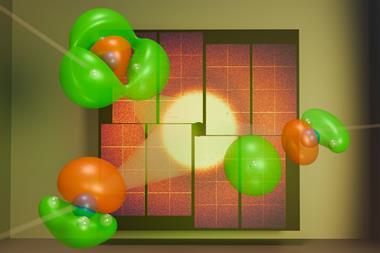Plucking out the secrets of the mysterious element
Of all the elements in the periodic table, two have always struck me as alluringly mysterious: francium and astatine. There are more elusive elements than these, of course. But somehow superheavies like seaborgium and nihonium have come to seem almost familiar, for all that they have only ever existed as a handful of fleeting atoms: their ghostliness has always been a given. Francium and astatine, though, found their place at the bottom of their respective groups (until tennessine’s introduction to group 17 in 2010, that is) around 80 years ago: francium was discovered in 1939, astatine in 1940. The first of these was found by Marie Curie’s protégée Marguerite Perey, who was the first woman to be elected – shockingly, as recently as 1962 – to the French Académie des Sciences.
It’s probably, then, because we feel we should know them better by now that these elements seem so perplexing. We all know what the alkali metals and the halogens are like, right? Francium astatide should be the world’s most dangerous table salt, a compound guaranteed to give you indigestion from a hefty dose of nuclear radiation as the elements decay in a blink. The longest-lived isotope of francium has a half-life of just 22 minutes (some isotopes actually decay into astatine), while that of the most stable isotope of astatine (210At, which does not occur naturally) is 8.1 hours. Neither element has ever been seen in the bulk form – their bulk properties are just estimates extrapolated from their lighter homologues. It’s rather poignant to realise that probably no one will ever look on a lump of astatine, expected to be dark and lustrous like iodine and to be either a metal or a semiconductor, and potentially a superconductor.
All the same, we do know a little about their chemistry. Astatine obliges family expectations by having an oxidation state of -1, but may also – like iodine – form a range of cations up to an oxidation number of +7. Sodium astatide has been made, along with a few other salts; even some aromatic astatide organic compounds have been reported. You might call astatine a rather indifferent halogen, however. Its electronegativity of 2.2 on the Pauling scale is about the same as that of hydrogen, so in HAt it should be the hydrogen that has a slight negative charge: it’s more hydride than astatide.
All the same, we do know a little about their chemistry. Astatine obliges family expectations by having an oxidation state of -1, but may also – like iodine – form a range of cations up to an oxidation number of +7. Sodium astatide has been made, along with a few other salts; even some aromatic astatide organic compounds have been reported. You might call astatine a rather indifferent halogen, however. Its electronegativity of 2.2 on the Pauling scale is about the same as that of hydrogen, so in HAt it should be the hydrogen that has a slight negative charge: it’s more hydride than astatide.
A new experiment has now given us another property of astatine that is not based solely on extrapolation or quantum-chemical calculation. Eight years ago, Sebastian Rothe of CERN in Geneva and his coworkers measured its first ionisation potential; now Rothe, David Leimbach (also at CERN) and an international team have determined its electron affinity1. So we know what it takes both to pluck an electron from astatine, and to stick one onto it.
In general, you need a particle accelerator to make astatine. That’s how Emilio Segré and his collaborators at the University of California, Berkeley first did it in 1940, by bombarding bismuth with alpha particles in the Berkeley cyclotron. At CERN, astatine is produced by the ISOLDE facility, which creates low-energy beams of radioactive nuclides by firing a proton beam at suitably chosen target materials (in this case thorium and tantalum). After extracting and separating At isotopes, the researchers negatively ionised them and separated off specifically 211At anions (with a half-life of 7.2 hours), which they sent to a device that measured the threshold laser photon energy needed to extract the extra electron and make a neutral atom. In this way, the electron affinity was measured as 2.41578 electronvolts – about 0.6 eV lower than that of iodine, which is consistent with the expected trend for the halogens and still greater than that for any other non-halogen elements measured so far. This number also agrees very well with the value from quantum-chemical calculations.
No real surprises, then. Still, this kind of detailed knowledge about astatine chemistry is far from academic. Despite its rarity and instability (the very name is derived from the Greek for ‘unstable’, astatos), astatine does have at least one potential use: as a potent source of alpha rays for targeted cancer radiotherapy. Here 211At is the main isotope of interest, and there are already promising results from targeting brain or ovarian tumours with astatine-laden antibodies.
A new experiment has now given us another property of astatine that is not based solely on extrapolation or quantum-chemical calculation. Eight years ago, Sebastian Rothe of CERN in Geneva and his coworkers measured its first ionisation potential; now Rothe, David Leimbach (also at CERN) and an international team have determined its electron affinity.1 So we know what it takes both to pluck an electron from astatine, and to stick one onto it.
In general, you need a particle accelerator to make astatine. That’s how Emilio Segré and his collaborators at the University of California, Berkeley first did it in 1940, by bombarding bismuth with alpha particles in the Berkeley cyclotron. At CERN, astatine is produced by the ISOLDE facility, which creates low-energy beams of radioactive nuclides by firing a proton beam at suitably chosen target materials (in this case thorium and tantalum). After extracting and separating At isotopes, the researchers negatively ionised them and separated off specifically 211At anions (with a half-life of 7.2 hours), which they sent to a device that measured the threshold laser photon energy needed to extract the extra electron and make a neutral atom. In this way, the electron affinity was measured as 2.41578 electronvolts – about 0.6 eV lower than that of iodine, which is consistent with the expected trend for the halogens and still greater than that for any other non-halogen elements measured so far. This number also agrees very well with the value from quantum-chemical calculations.
No real surprises, then. Still, this kind of detailed knowledge about astatine chemistry is far from academic. Despite its rarity and instability (the very name is derived from the Greek for ‘unstable’, astatos), astatine does have at least one potential use: as a potent source of alpha rays for targeted cancer radiotherapy. Here 211At is the main isotope of interest, and there are already promising results from targeting brain or ovarian tumours with astatine-laden antibodies.
But for such treatments to work, the chemical behaviour of astatine needs to be better understood. Currently, biochemical reactions may cleave off the astatine in the body before it reaches the tumour, so that the astatine releases its alpha particles into healthy tissues. Understanding electronegativity and electron affinity tells us about the polarisation of astatine chemical bonds to, say, carbon or boron in therapeutic agents, and so about their likely reactivity. There are good reasons to persuade the mystery halogen to give up its secrets.
References
1 D Leimbach et al, 2020, arXiv: 2002.11418












No comments yet